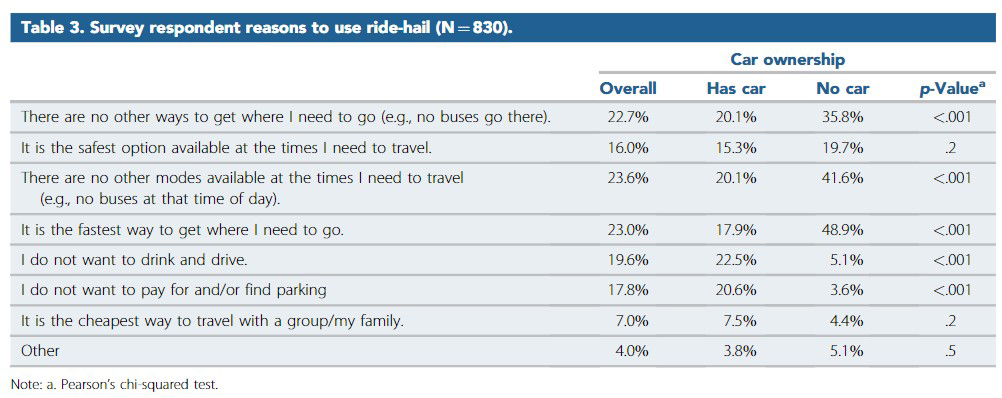Uncovering JAPA
Expanding the Benefits of Ride-Hail to Lower-Income Households

Ride-hailing companies like Uber and Lyft have sparked widespread transformation in how many people get around day to day. However specific factors such as car ownership and household income shape whether and how individuals can take advantage of these services. In particular, authors Anne Brown, Nicholas J. Klein, Michael J. Smart, and Amanda Howell delve into the distinct ways that moderate– and low-income households use ride-hail in their study, "Buying Access One Trip at a Time" (Journal of the American Planning Association, Vol. 88, No. 4).
Ride-hail Popular Among Lower-income Households
The authors conducted an online survey and more than two dozen semi-structured interviews, all targeted toward households earning less than $50,000 per year. They suspected that differing rates of car ownership between higher– and lower-income households would result in different patterns of ride-hail usage.
They found that a higher proportion of their respondents had used ride-hailing at least once compared to rates from less targeted studies. Usage was reportedly even more frequent among members of households without a car, reinforcing the notion that ride-hail meets different needs for lower-income and no-car households that may be obscured by general trends. Respondents without car access were more likely to emphasize ride-hail's ability to fill gaps in the mobility system, as the results in the figure below illustrate.

Table 3. Survey respondent reasons to use ride-hail (N=830)
Ride-hail's Affordability, Usage Analyzed
Although only 36 percent of zero-car respondents deemed ride-hailing to be affordable, they were nonetheless more likely to rely on it for practical trips such as attending medical appointments or grocery shopping. While ride-hail's speed and convenience make it particularly well-suited for addressing mobility gaps for no-car households, its often unpredictable cost can also be disproportionately burdensome for these users. Three-quarters of zero-car respondents cited cost as the main reason that they did not use ride-hailing more often (compared to 52 percent of respondents with cars).
Overall, this study highlights the importance of disaggregating data to gain a deeper understanding of how the costs and benefits of broad trends — such as new mobility options — are potentially being unevenly experienced. Ride-hail services can be seen as one tool within a city's broader mobility ecosystem, and targeted actions like subsidies can help ensure that this transit method reaches people who would benefit most from it.
Top image: Getty images/E+ whitebalance.oatt


